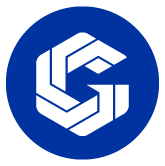

|

|
| Major: 1770
Catalog Year: 2023-2024
Effective Term: 2019 Fall 1
Last Admit Term: 2021 Summer
Award: CCT Total Clock Hours: 828 CIP Code: 48.0508 |
Initiating College: Gateway Community College
Program Availability: Not Found
Program Availability: College-Specific
Field of Interest: Applied Technology
GPA:
|
|
SOC Code: 51-4121.06
| |
|
|||||||||||
| Required Courses | |||||||||||
|---|---|---|---|---|---|---|---|---|---|---|---|
ISP116 Computer Foundations 24 | Clock Hours: 828 | ||||||||||
| Program Competencies | |||
|---|---|---|---|
| 1. Demonstrate the ability to navigate applications in Windows 10. (ISP116)
2. Establish professional email work habits. (ISP116) 3. Effectively communicate using technology. (ISP116) 4. Demonstrate a basic understanding of a computer and its components. (ISP116) 5. Manage files and folders in Windows 10. (ISP116) 6. Manage files and folders stored in the "Cloud." (ISP116) 7. Collaborate using Google applications. (ISP116) 1. Identify basic safety principles (construction site safety). (COR101) 2. Demonstrate proper personal protective equipment (PPE). (COR101) 3. Understand and apply construction math. (COR101) 4. Demonstrate proper use of hand tools. (COR101) 5. Demonstrate proper use of power tools. (COR101) 6. Read and understand construction drawings. (COR101) 7. Demonstrate basic rigging principles. (COR101) 8. Demonstrate effective communication skills. (COR101) 9. Explain the importance of basic employability skills and how they apply to the construction industry. (COR101) 10. Demonstrate proper material handling procedures. (COR101) 11. Demonstrate welding safety practices. (WTO111) 12. Demonstrate oxy-fuel cutting. (WTO111) 13. Demonstrate plasma arc cutting. (WTO111) 14. Demonstrate air-carbon arc cutting and gouging. (WTO111) 15. Demonstrate base metal preparation. (WTO111) 16. Identify and describe welding code organizations. (WTO112) 17. Identify and define weld quality. (WTO112) 18. Identify and explain SMAW equipment and setup. (WTO112) 19. Identify and describe SMAW electrodes. (WTO112) 20. Explain and demonstrate SMAW beads and fillet welds. (WTO112) 21. Identify and describe various types of fit-up and alignment tools. (WTO113) 22. Describe techniques to avoid weldment distortion. (WTO113) 23. Describe the role of codes and specifications. (WTO113) 24. Define and Identify types of groove welds. (WTO113) 25. Describe how to prepare for groove welding. (WTO113) 26. Identify various types of groove welds and describe how to prepare for groove welding. (WTO114) 27. Identify various types of groove welds and define related terms. (WTO114) 28. Describe how to prepare for groove welding. (WTO114) 29. Describe the technique required to produce various groove welds. (WTO114) 30. Describe the technique required to produce groove welds in the 1G and 2G positions. (WTO114) 31. Describe the technique required to produce groove welds in the 3G and 4G positions. (WTO114) 32. Identify groove welds and prepare for SMAW pipe welding. (WTO131) 33. Demonstrate technique required to produce single process groove welds. (WTO131) 34. Identify various groove welds and preparations for GTAW on pipe. (WTO133) 35. Demonstrate technique required to combine welding processes to produce groove welds. (WTO133) | |||
|
+ indicates course has prerequisites and/or corequisites.
++ indicates that any suffixed course may be selected. Clock Curriculum Committee Approval Date: 5-1-2019 | |||